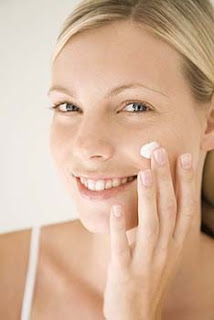Hyaluronic Acid is an ingredient used in many high quality products and has been linked to a role in tissue hydration and dehydration, lubrication, and other aspects of cellular function, along with other vitamins and nutrients in the body. Hyaluronic Acid has a half life in the body, in cartilage of two to three weeks, but only one day in the skin. When synthesis in the body declines people experience discomfort of the joints, wrinkles and many people report more frequent illness, leading many to believe that a constant supply of Hyaluronic Acid is beneficial. Some scientists believe that it creates a cushion effect between joints of the body and provides more elasticity in the skin, and a softer feel. Some scientists also believe that it raises the while blood cell count, helping to ward off infection.
Hyaluronic Acid was described as the goo muscle until the late 1970's, and was simply believed to be a carbohydrate polymer until that time. It was later discovered that it is one of the main lubricating components of synovial fluid in the body, abundant in extra cellular matrices, and that it contributes to the hydrodynamics of tissue, cell proliferation and movement. Naturally found in many body tissues, Hyaluronan Acid is often used in medical applications such as eye surgery - corneal transplants, cataract surgery, glaucoma surgery, and retinal detachment repair. It is also used to treat osteoarthritis in areas such as the knee. In addition to lubrication and cushioning of joints it has an analgesic effect, and positive effects of cartilage. In cancer treatment it is used as a tumor marker; particularly in breast cancer and prostate cancer. Use of Hyaluronan Acid in cosmetics is a relatively new use of this substance, but it has been approved by the FDA since 2003 and is becoming increasingly popular.
An interesting side note is the study of a village in Japan, featured on an episode of the ABC newsmagazine 20/20. People in this village tend to live to be much older than average, and ten percent of the villagers are 85 years of age or older. The diet of the village people is primarily sticky stanches like sweet potatoes, and it is believed by many people that these foods promote Hyaluronic Acid, which contributes to youthfulness due to the lubricating effects on joints, skin, and the eyes. While these studies have not been proven, many people find them of interest and research continues.
For more information visit: http://www.revitol.com/?aid=955429
Hyaluronic Acid was described as the goo muscle until the late 1970's, and was simply believed to be a carbohydrate polymer until that time. It was later discovered that it is one of the main lubricating components of synovial fluid in the body, abundant in extra cellular matrices, and that it contributes to the hydrodynamics of tissue, cell proliferation and movement. Naturally found in many body tissues, Hyaluronan Acid is often used in medical applications such as eye surgery - corneal transplants, cataract surgery, glaucoma surgery, and retinal detachment repair. It is also used to treat osteoarthritis in areas such as the knee. In addition to lubrication and cushioning of joints it has an analgesic effect, and positive effects of cartilage. In cancer treatment it is used as a tumor marker; particularly in breast cancer and prostate cancer. Use of Hyaluronan Acid in cosmetics is a relatively new use of this substance, but it has been approved by the FDA since 2003 and is becoming increasingly popular.
An interesting side note is the study of a village in Japan, featured on an episode of the ABC newsmagazine 20/20. People in this village tend to live to be much older than average, and ten percent of the villagers are 85 years of age or older. The diet of the village people is primarily sticky stanches like sweet potatoes, and it is believed by many people that these foods promote Hyaluronic Acid, which contributes to youthfulness due to the lubricating effects on joints, skin, and the eyes. While these studies have not been proven, many people find them of interest and research continues.
For more information visit: http://www.revitol.com/?aid=955429


Nice one! like it! Thanks! on website
ReplyDelete